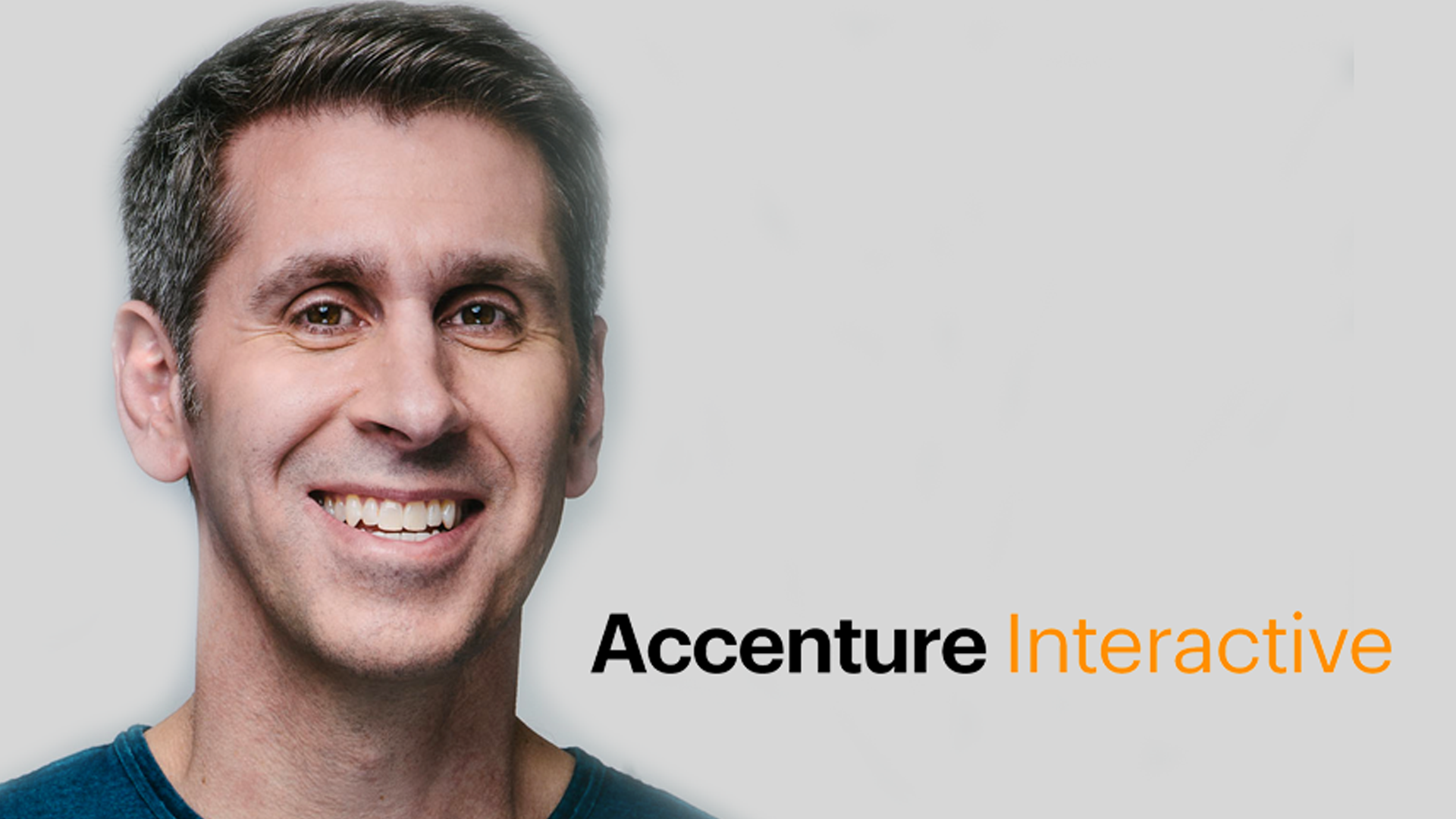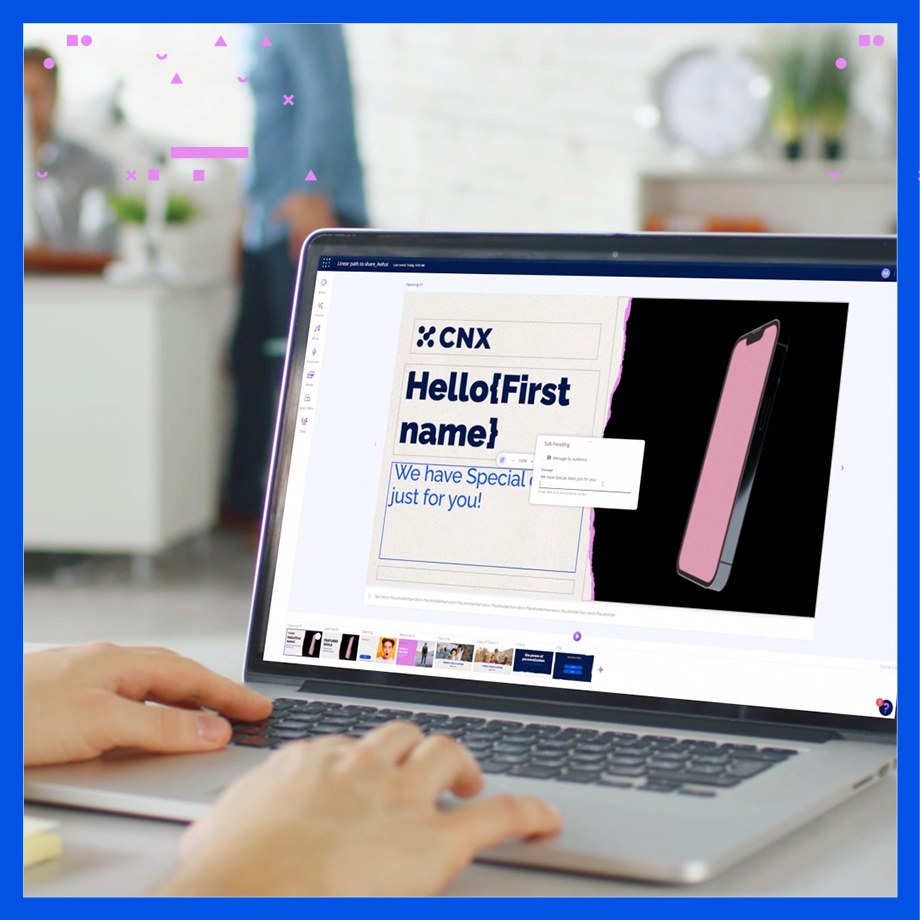Earlier this year I defined the Chief Personalization Officer (CPO) as a new position which brands need to fill. At our SmartVideo Summit, 1-800 CONTACTS CMO Phil Bienert even provided some feedback on writing a job description for this role. But according to Jeriad Zoghby at Accenture Interactive, a brand doesn’t necessarily need a CPO in order to start acting like one.
As the Global Personalization Lead at Accenture Interactive, Jeriad’s practice enables clients around the world to create unique and curated experiences for their customers seamlessly across channels. Accenture Interactive is ranked the world’s largest digital agency in the latest Ad Age Agency Report.
Jeriad has a PhD in Operations Research, holds multiple patents and co-invented Accenture’s artificial intelligence technology for advanced audience planning and segmentation. He has been recognized in Advertising Age’s Marketing Technology Top 25 Trailblazers List in 2017 and has been quoted in publications such as CMO.com, The Drum, MediaPost and Ad Age.
Jeriad shares his thoughts about personalization, the CPO mentality and the customer genome in the second installment of our CPO of the Future series.
What’s a consistent definition of personalization that you believe should be codified on the wall of every marketing organization?
Create personal experiences that make it easier for customers to get what they want on their terms.
What are the building blocks of a great personalized experience for the end consumer?
It depends on how you define it. It depends on whether you are talking marketing, the sales and service experience, or the whole gamut. If you are talking about the travel industry and you throw out the word ‘personalization,’ then that experience is about hospitality. Travel brands want to make it easier for, let’s say, a guest to leave the hotel or cruise line, go out into the city and still have a concierge at their beck and call on their mobile device for anything that they need. That is a different mindset than having marketing communication that is tailored for your customer and their interests. Most CMOs will be forced to think about both worlds. They’re not going to be fortunate enough to think only about marketing or only about sales and service going forward.
What departments and resources in a company should be involved in personalization strategy and execution?
It’s a combination of the CMO and the CIO organizations working together. It depends heavily on what industry it is that will determine how far those combined efforts go. For instance, if I am in CPG, many CPGs don’t have direct to consumer businesses, so you have to factor in the brand dimension. The brand needs to own the voice of the brand and have the strategic and creative freedom to accomplish that, and then the CMO and the CIO create central operations to enable that. However, if it’s a more traditional kind of brand, then the CMO or the CIO alone can enable a personalization strategy.
What are some of the tools that you believe are must-haves for executing a personalization strategy?
It depends. If I am talking about advertising, companies like SundaySky, Google Doubleclick and Facebook need to be part of the personalization discussion. All of those are complementary tools without any contradiction among them. I may have to factor in my Amazon platform if I am in CPG, life sciences or automotive. Then I have to worry if I have on-site search or product recommendations if people come to my site. It’s also important to start looking at AR and voice, both of which are pushing the envelope on personalization. There is no one tool.
Companies need to focus less on finding the magical tool and more on how to orchestrate the tools to work together to create a seamless experience.
Having a bunch of things doing their independent optimizations – on your mobile app, on your website, your voice-activated service – are worthless. If these things aren’t working together to focus on the customer, you’re failing.
If an enterprise marketer only has the resources to start personalization in one area, what are its priorities?
If I had to pick one area to focus on, it would be experimentation, and specifically what we call experience optimization. When you run data-driven experiments on the experience side, you move to an argument about whether personalization is valid. I can run a bunch of great advertising and say I did a great job, but convincing everyone else outside my organization that I had an impact is very hard. When I am able to say “This is the experience we had before, and this is the experience we have now” and I show an actual measurable discerning impact like “We are getting better conversions,” no one can argue with that. It’s a very simple metric and it can drive change.
Implementing experience optimization can prove a financial P&L type of impact.
What are the biggest obstacles that marketers face when trying to implement personalization strategies today? What advice would you give them based on your experience?
It all goes back to people, process, and technology. First there is the orchestration. It’s very easy to buy tools; it’s much harder to get them to work together to create a personalization experience. Too often CMOs are focused on functions and features rather than the experience itself. It’s very easy to pick off things on a spreadsheet that you add to your page, but effectively what you have done is try to copy someone else’s work; that makes you a follower. Second, it’s about culture, and it’s less about who you hire and more about the evolution of who you have. Too often on the cultural side, it’s a hard transition going from an old-school thinking of “I’ve got six months to do a planning process and put the campaign together” to telling a machine how to act. That’s a monumental transition that not everyone is capable of making. Lastly, there is the operational side of it. Everyone can go and do a cool case study and go to a conference to talk about how they use personalization to have an impact, but the problem is that personalization generally doesn’t touch the customer.
It’s the content system, the campaign management system, the commerce system that actually interact with the customer. Personalization is more like the brains within the body. It tells the other systems how to act.
If your operating model, your Q/A, and your governance aren’t changed to do personalization at scale, what you find is that you get pieces that are successful, but you can’t actually maintain it.
How do you advise your clients to measure the success of a personalization strategy? Which metrics should they instrument from the start?
Focus on anything P&L related. But at the same time, it also depends on what your plans are and what you want to measure first. If you’re end-sourcing programmatic, then your metrics are going to be related to that. If you’re decoupling your content to make it more agile for personalization, then you will measure that. There is no one metric, just like there is no one tool.
You’ve spoken before about the customer genome. How does that relate to personalization?
The customer genome is a different way to think about the way you can capture information. For example, if you go to a clothing store, the employee who helps you shop will know nuances about you that you appreciate. The person will learn the colors, brands, styles and features that you prefer and understand why you make the decisions you make. It’s the customer mentality of, “Don’t show me shirts because other people bought a shirt like it. Show me shirts because I prefer those styles or features.” The point of the genome is to remind companies that the data is out there. When a customer shops Amazon and is deciding between two products, that customer doesn’t just look at the names of the products, but also the specs, the reviews, the features, the descriptions. When companies start paying attention to everything customers buy, they will start to pick up nuances about customer preferences.
As customers go down those transformative journeys to be truly personal, the first step for brands is to do better listening. Don’t start with technology; start with a great experience, then use analytics and technology to enable that.







